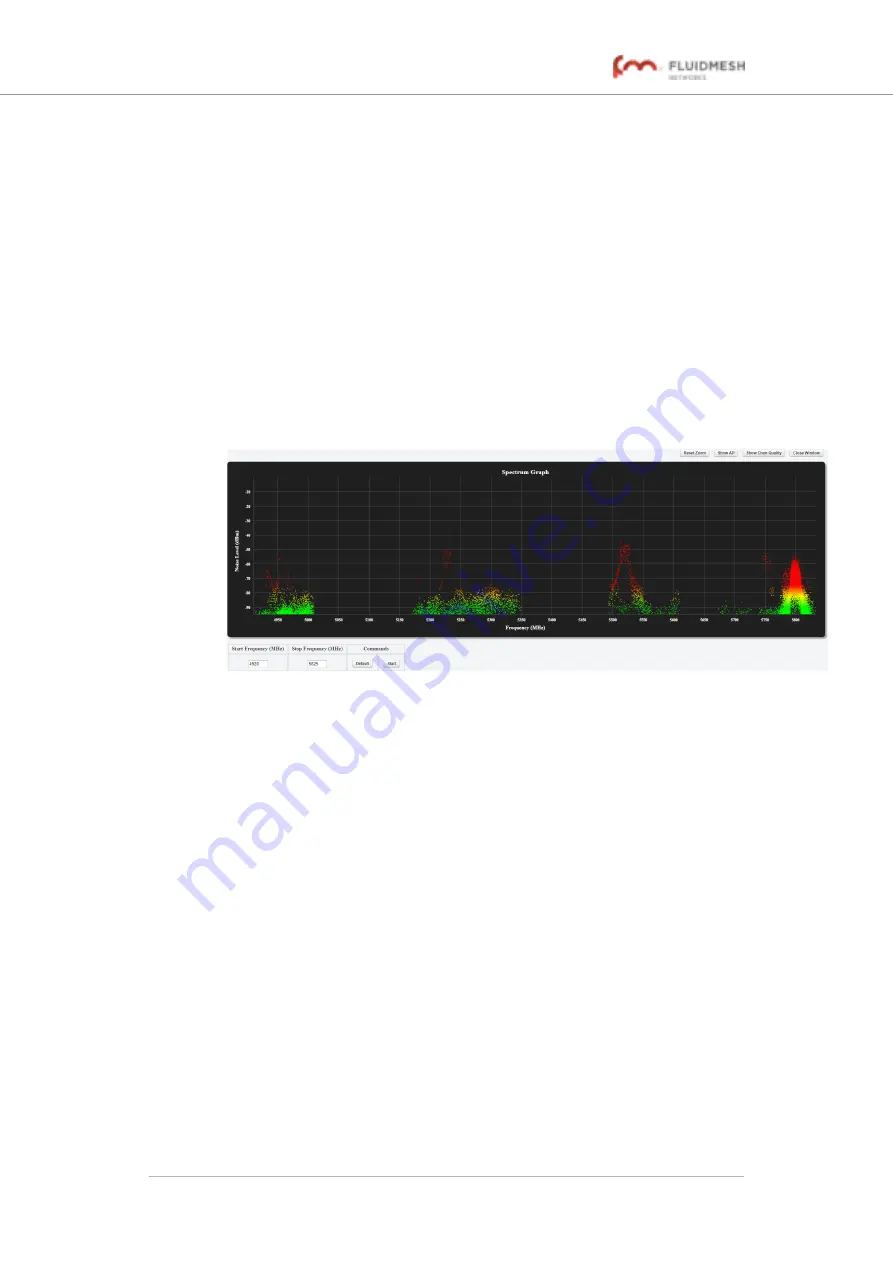
6.4.4. Spectral analysis
The
Spectrum Graph
window contains a static graph readout and
controls to detect radio-frequency interference that exists between local
Fluidmesh units transmitting and receiving in a specified frequency band.
The window can be used make the most efficient choice of center
frequency and channel width for radio links between units.
To use the Spectrum Graph window, do the following steps:
1.
Click the
-spectral analysis
link under
GENERAL SETTINGS
in
the left-hand settings menu.
• The
Spectrum Graph
window will open in a new web
).
Figure 29. Spectrum Graph window (typical display)
• The Spectrum Graph readout will be empty.
2.
Choose a range for the frequency band that must be scanned for
interference or excessive radio noise by doing either of the
following:
• Set the start and stop frequency selection to the system
defaults (4 950 MHz to 5 825 MHz) by clicking
the
Default
button.
• Enter custom start frequency and stop frequency values for
the frequency band that must be scanned for interference,
in the
Start Frequency (MHz)
and
Stop Frequency (MHz)
fields.
3.
In the
Commands
table, click the
Start
button.
• When the frequency scan is complete, the Spectrum Graph
window will show the scan result.
• Signal quality for each channel is shown as a function of
signal noise quantity (in decibel-milliwatts) at each
frequency. The higher the value shown on the graph, the
poorer the signal quality. A green display indicates high
Fluidmesh 4200 FIBER
© Fluidmesh Networks LLC
Page 77 of 180






























